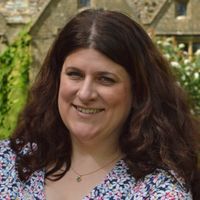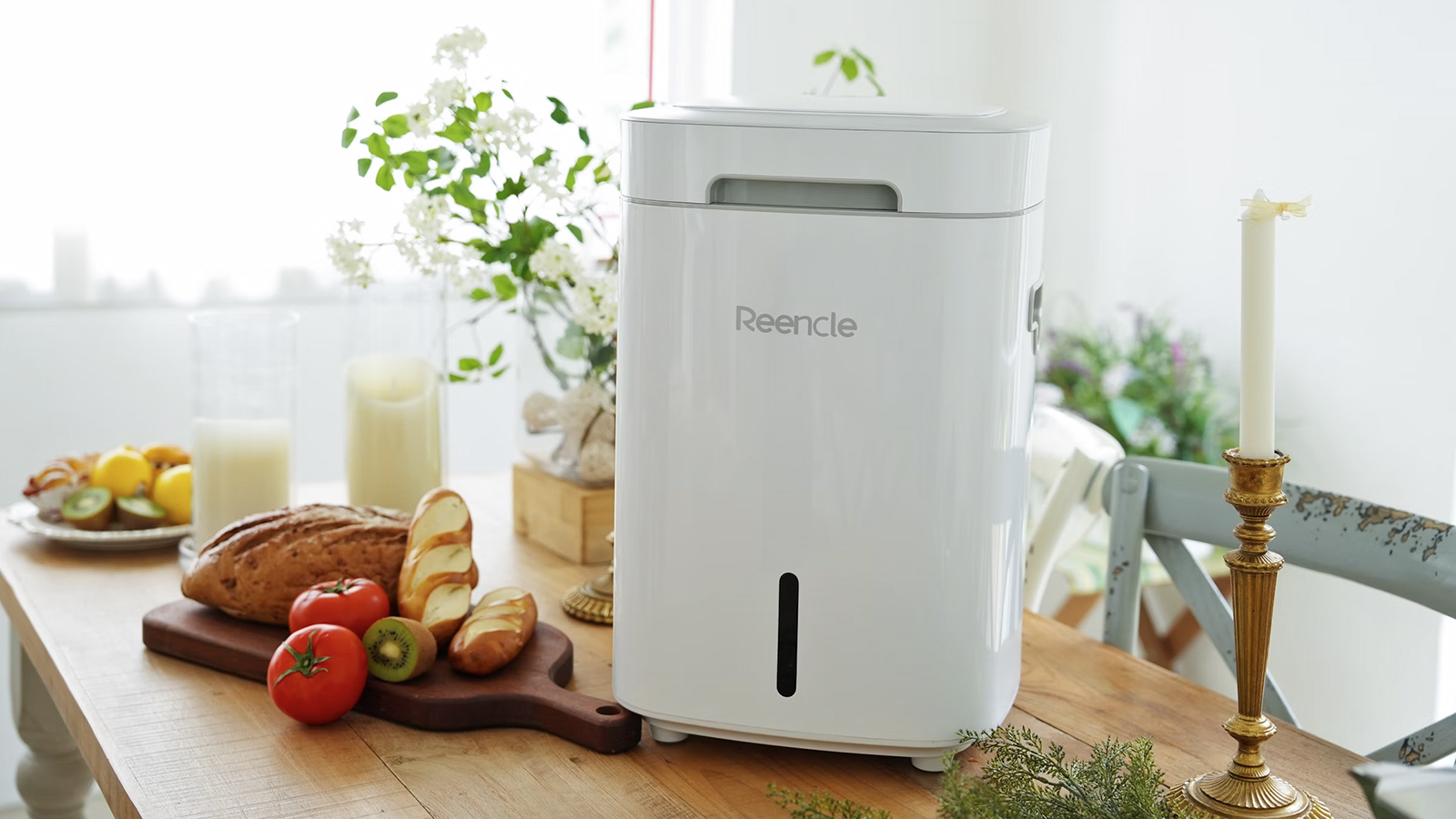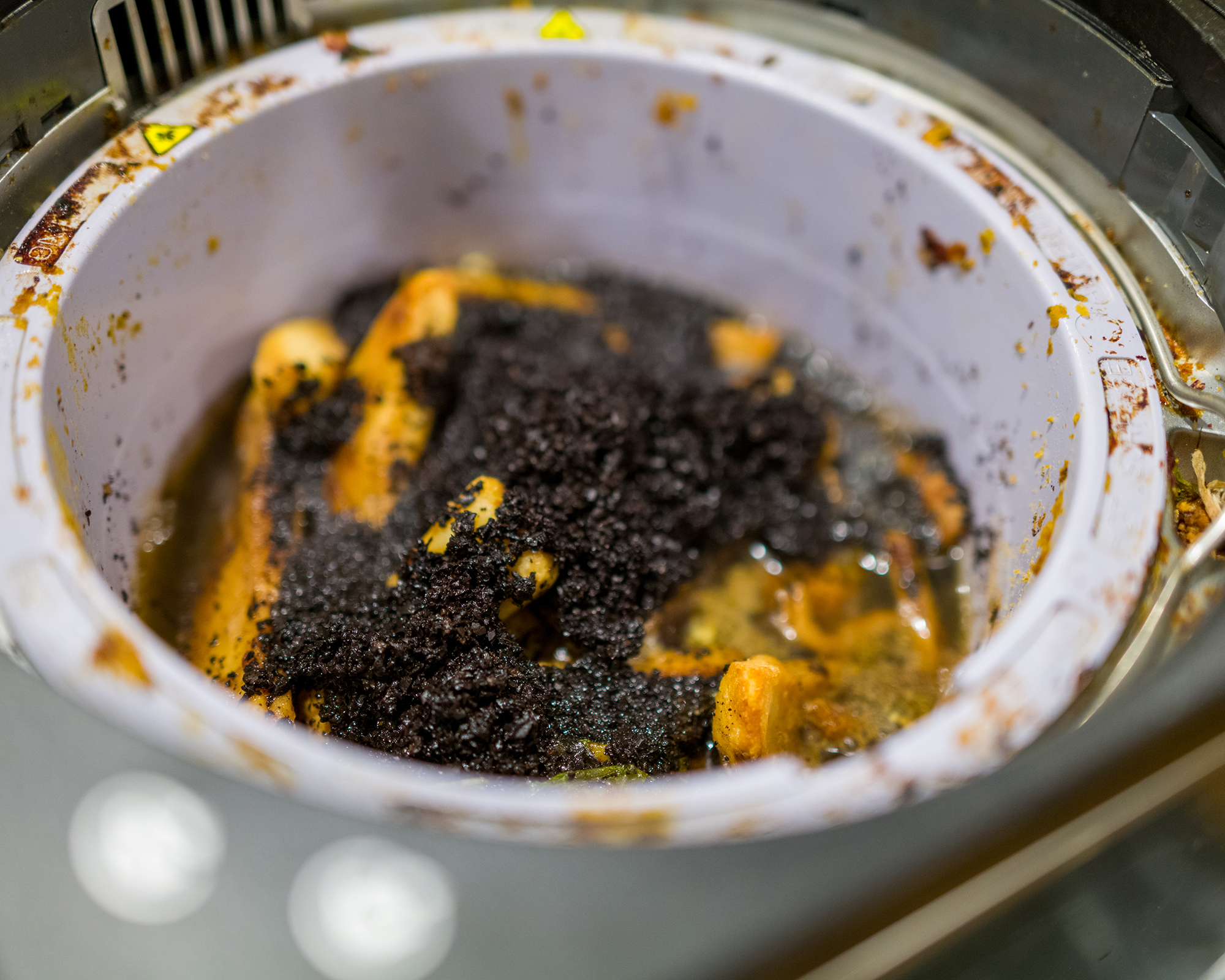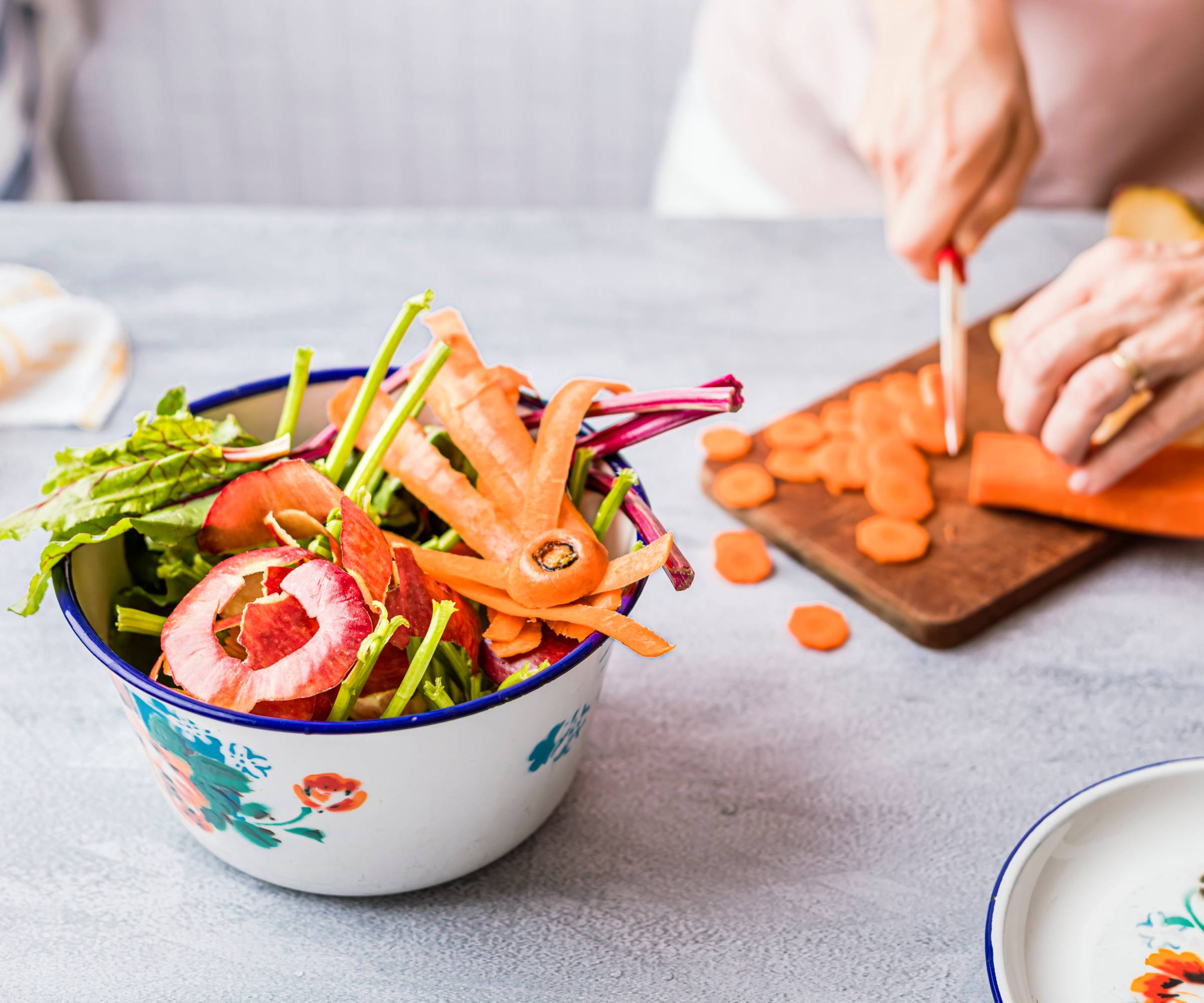Electric Composter Guide: Are Countertop Food Recyclers The Future Of Sustainability?
Discover how electric composters work, their benefits and limitations – and whether they're worth the investment as a sustainable easy win.


Electric composting is promoted as a super fast way to process food scraps on the kitchen countertop and turn them into nutrient-rich compost for the garden. The machines are rising in popularity among gadget-loving gardeners but subject to much industry debate – rhapsodized by proponents as a quick route to sustainability and demonized by critics who say the claims are too good to be true. So where does the truth lie?
All gardeners generally agree that learning how to compost at home is a good thing – not only because it’s great for plants, but because it tackles some of the staggering 92 billion pounds of food waste produced annually in the United States. Research by EPA suggests that only 5% of this food waste is composted, with the rest going to landfill.
While reducing food waste should be the priority, where unavoidable, composting is the most sustainable outcome and supports healthy plant growth in the garden.
The problem is that it takes time to make “black gold”. The process of allowing food scraps and garden waste to break down into compost takes anything from a few months to more than a year. It also requires space for a compost bin or pile, a careful balance of compost greens and browns, the correct temperature, and aeration through turning the pile. So a countertop composting solution offering results in as little as a few hours sounds like the gardening holy grail.
The best electric composters are designed to provide a quick and convenient solution for composting food waste and turning it into soil-like material – all from the comfort of your home with minimal effort. They are an appealing option for those who lack outdoor space for traditional composting or need a fast solution for indoor composting. But they come with both advantages and limitations.
How Do Electric Composters Work?
Electric composters accelerate the natural composting process through a combination of heat, grinding, and aeration. When you add food scraps into the machine, it heats them to a high temperature – usually at least 160°F (71°C), with some models claiming to operate at over 212°F (100°C) – to kill off harmful bacteria and pathogens.
While heating, electric composters use a grinding or chopping mechanism to break down the scraps into smaller pieces, speeding up decomposition. Most models then introduce air by rotating or agitating the material, simulating the aeration needed in traditional composting. This continuous mixing keeps the breakdown process efficient and minimizes odor – which is also aided through use of a charcoal filter.
Sign up for the Gardening Know How newsletter today and receive a free copy of our e-book "How to Grow Delicious Tomatoes".
Electric composters take as little as a few hours to reduce food waste to a dry, crumbly material that has reduced in volume by 70-90% due to the removal of water. However, though it may look like compost, it is not ready to use in the garden and must be further decomposed in soil or traditional composting systems before it can benefit plants.
“While efficient, electric composters remove much of the moisture that microorganisms need to thrive, resulting in a material that is drier than traditional compost. However, once matured into a nutrient-rich material, the remnants are ideal for use in the garden,” explains Caleb Quiatchon, product manager at Newair, the brand behind the Luma Kitchen Composter.

Not Real Compost?
The main criticism of electric composting is that most – but not all – machines essentially dehydrate and grind down food. This means the resulting material lacks the “microbial magic” found in compost made using traditional, slower methods. Because the waste has not undergone microbial decomposition, it doesn't contain the compost bacteria required to enrich the soil. Indeed, the process of heating and grinding the material can eliminate essential microbes. In short, it is not compost – yet.
To become compost, the material should be added to a traditional compost solution, or unplanted soil, where it will eventually break down with the help of microorganisms.
It’s worth noting that while the US Composting Council does not recognize this material produced by electric composters as compost, it does acknowledge that it can be ”useful feedstock for the composting process or other applications”. Due to the debate surrounding electric composters, some manufacturers have rebranded their machines as food recyclers.
It’s not only the missing bacteria that may be problematic, as the freshly ground material can contain concentrated levels of certain nutrients and salts that, when added to garden beds, create an imbalance in the soil's nutrient profile. It may also heat up during the decomposition process, harming plant growth. In addition, the food waste could become moldy or attract pests if immediately used in the garden.
All this highlights the need for ground food waste to undergo further decomposition before it can be used as compost. This can be added to the compost pile or bin, a vermicomposting system, an alternative solution such as bokashi composting, or it can be sent to a municipal composting facility.

Adding the Microbial Magic
Most electric composters should be considered “pre-composters”, offering a quick and convenient solution for processing kitchen scraps that, after a term on the compost pile, can contribute to making compost for the garden. However, the latest industry innovations have made great strides towards fixing the microbial problem.
The Reencle Home Composter, available on Amazon, is the first microorganism composter that produces something close to real compost by introducing bacillus, a bacteria found in compost heaps. Maintaining an optimal temperature range of 131-140°F (55-60°C), the machine allows the microbes to participate in the decomposition of food scraps, rather than killing them off, with just the right amount of moisture left in the material.
“Most of the electric composting products in the market are dehydrators,” explains Joe Tegerdine, Reencle’s general manager for North America. “Some of them have additive packets to add to cycles to introduce bacteria to their grounds, but in order for bacteria to function they need moisture, so adding bacteria to a dry environment is not actually stimulating bacterial decomposition.
“Reencle attempts to create the optimal environment for the microbes so they can do their job as quickly and efficiently as possible. It relies on bacterial decomposition to compost food waste and uses a proprietary compost starter that must be present in the unit for it to work. The unit utilizes the microbes, heat, water, and oxygen to compost food waste, simulating what someone would essentially do if they were composting in their backyard using a tumbler or turning bin.”
Reencle can handle about 2.2 lbs of food waste per day and will generate enough compost to be removed about every 10 days. Generally, close to 90% of food waste processed by the unit will be broken down within 24 hours, but it is not quite ready to be used as compost at this stage…
How Long Do Electric Composters Take?
Until the broken-down food waste starts to decompose, most of the nutrients are not accessible to plants, and so the “compost” must be allowed to further mature. “Exactly how long the compost takes to be garden-ready depends on what you are using it for; it can vary based on what you are composting, or what you are putting the compost on,” explains Newair’s Caleb.
Ideally, the broken-down food waste should be added to the compost pile along with your garden waste, and allowed to complete its natural cycle; however, it can also be dug into soil in an area of the garden that is not yet planted to enrich the soil. You should wait around three months before planting.
Due to the addition of microorganisms, Reecle is quicker than most. “In typical settings, once the excess compost is removed from the unit, it needs to be mixed with soil 4:1 and allowed to cure for about three weeks if used for planting. However, mulch can be spread immediately,” explains Joe.

What Can You Compost?
What can be composted in an electric composter is similar to a traditional compost bin. However, electric composting has a few advantages here as the machines can tackle meat scraps, which are usually left out due to pathogens, as well as weeds, which most electric composters destroy through the heating process.
Newair’s Caleb provided the following list of what can and cannot be added to an electric composter, although it may differ slightly depending on your chosen model.
Go ahead and recycle:
- Fruits
- Vegetables
- Meat scraps
- Shellfish
- Dairy
- Nuts and seeds
- Legumes
- Fish bones
- Coffee grounds
- Teabags
- Eggshells
- Weeds and foliage
Do not recycle:
- Large bones
- Hardwood
- Cooking oil
- Candy and gum
- Large fruit cores
- Hard fruit shells
- Metals
- Synthetic fibers
- Plastic
How Much Do They Cost to Run?
Though the initial outlay of purchasing an electric composter is high – on average between $400-$1,000 – they are not expensive to run.
“A composting cycle uses about 1kW of power. On average, that is about 16.63 cents per cycle,” says Caleb.

Are Electric Composters Good for the Environment?
In some aspects, electric composters are good for the environment as they can quickly break down food waste to be used in composting. On a wider scale, this could significantly reduce the level of food waste that ends up in landfills.
Conversely, the plastic and energy used in the manufacturing and running of electric composters have a negative environmental contribution. The units also require regular charcoal filter replacements and contribute to electronic waste at the end of their life.
Owners of electric composters must ensure they make proper use of their machines to avoid undermining their eco-conscious efforts.
Where space and time allow, other slower forms of composting are more sustainable and cost-effective solutions. However, where other options are limited and you don’t have access to municipal composting, then an electric composter offers a solution to dealing with food scraps that is better than sending them to landfill – as long as you are able to either use or donate the waste material.
Are Electric Composters Worth It?
Given that starting a compost heap in the garden doesn’t cost anything, electric composters are a financial investment that may prove too costly for some. The units can also struggle with the quantity of kitchen waste in bigger households, and gardeners may find they lack the space to utilize all of the resulting material.
However, the machines’ benefits make electric composting a worthwhile investment for many. Since they’re indoors, electric composters work in any season, even in winter when outdoor compost piles might freeze. They can also process a greater variety of food scraps than traditional methods. If odors are a concern, it’s good to know that these units are typically sealed and equipped with filters to minimize or eliminate bad smells.
For most proponents, however, their value simply comes down to the time saved. “The biggest difference between what is produced in our product and a traditional backyard composting setup is the time it takes to create mature compost,” explains Reencle’s Joe. “Depending on the climate where someone lives, traditional composting can take months, sometimes even a year, while our takes a few weeks.”

Melanie is an experienced gardener and has worked in homes and gardens media for over 20 years. She previously served as Editor on Period Living magazine, and worked for Homes & Gardens, Gardening Etc, Real Homes, and Homebuilding & Renovating. Melanie has spent the last few years transforming her own garden, which is constantly evolving as a work in progress. She is also a passionate organic home grower, having experimented with almost every type of vegetable at some point. In her home, Melanie tends to an extensive houseplant collection and is particularly fond of orchids.